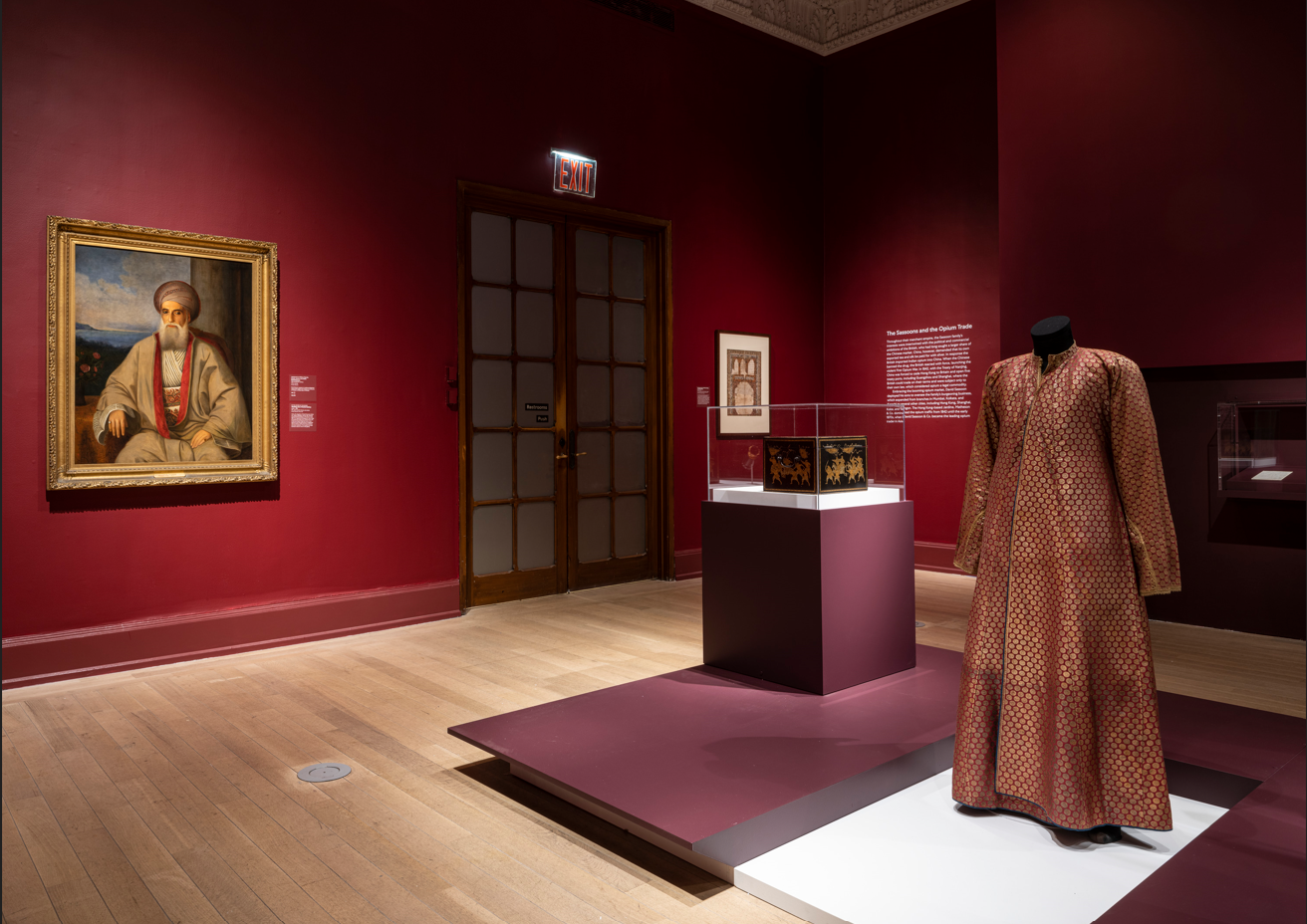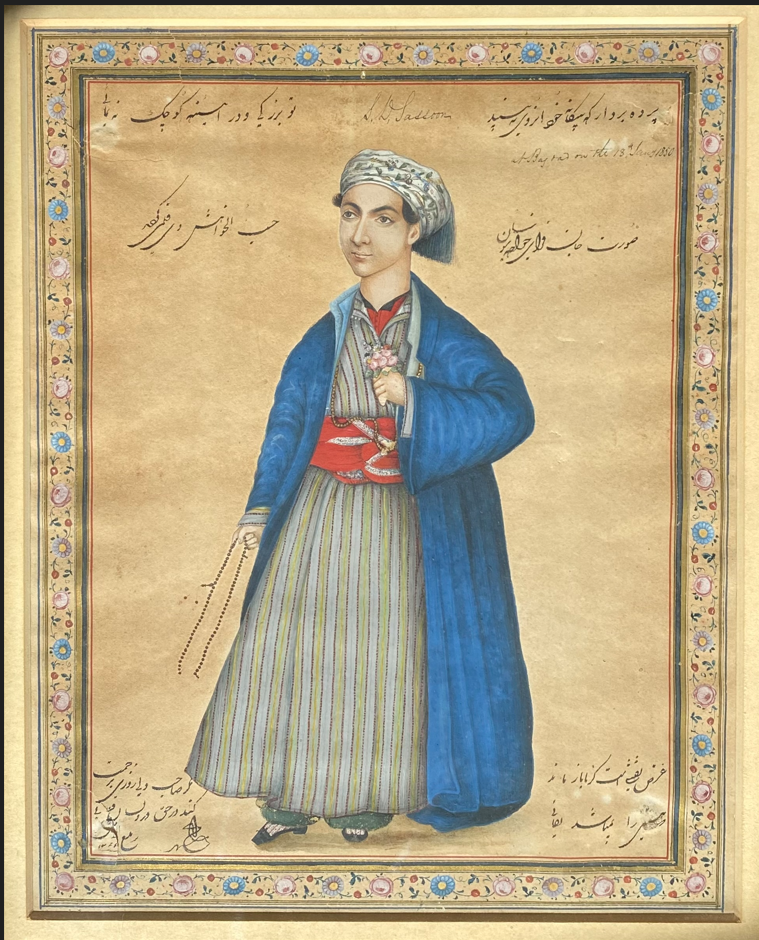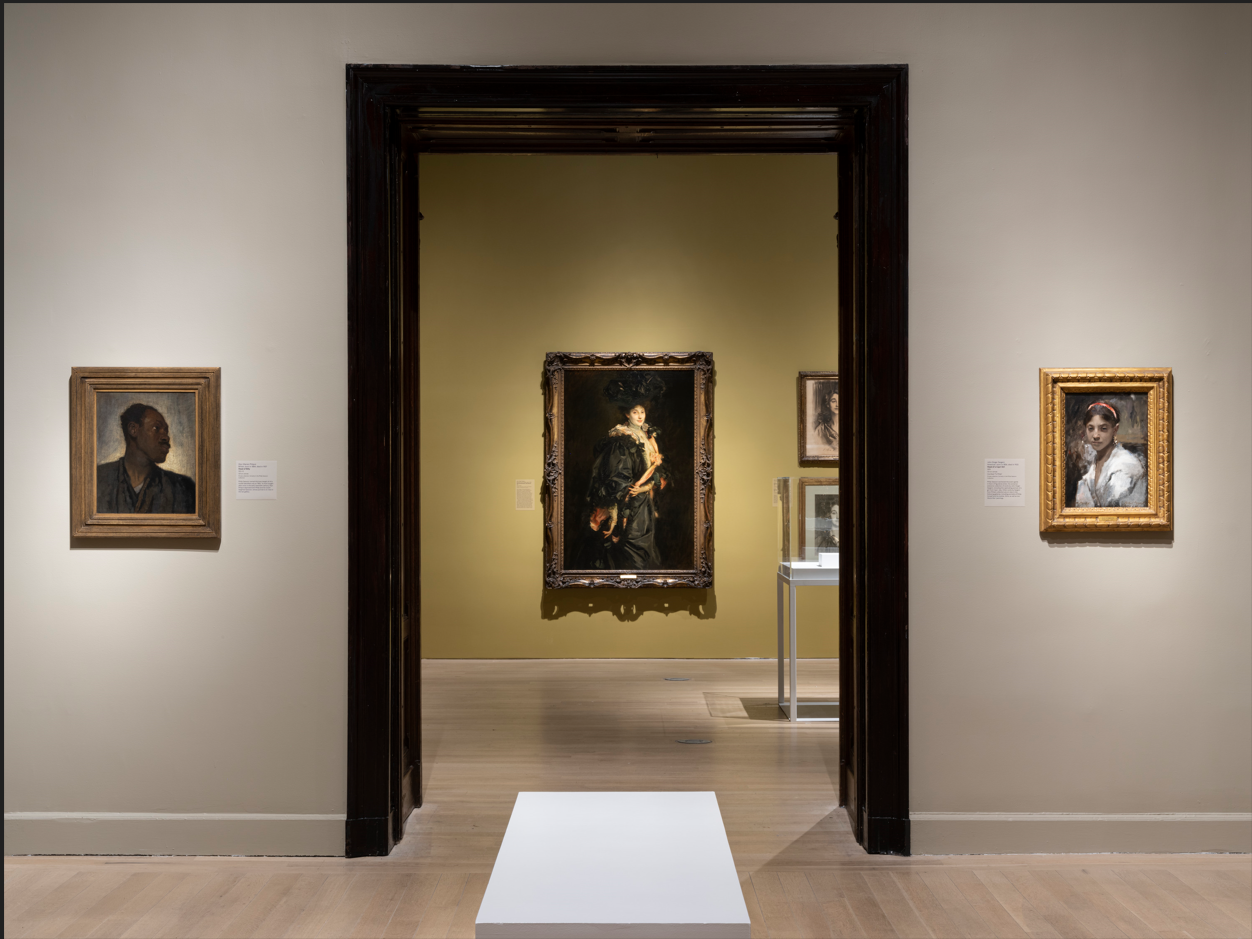- youtube
- bluesky
- Home
- About
- Costume Journal
- Membership
- Conference & Events
- Grants & Awards
- News & Social
In this week’s blog, The Costume Society’s News Editor Babette Radclyffe-Thomas reviews The Jewish Museum’s latest exhibition The Sassoons.
Having opened on March 3, The Sassoons at the Jewish Museum in New York covers a fascinating century of the Sassoon family from the early 19th century to World War II. The exhibition focuses on the family’s key role in global trade, art collecting and civic engagement and charts four generations of this famed Jewish family, who lived across continents from Iraq and China to India and England.
The Sassoons is curated by Claudia Nahson, Morris and Eva Feld Senior Curator at the Jewish Museum, New York, and Esther da Costa Meyer, Professor Emerita at Princeton University, who chose this theme “because the story of the Sassoon family is fascinating and filled with captivating people and extraordinary art. We feel that it is a very modern story. Although it began unfolding two centuries ago, it resonates far beyond the Sassoons’ lives and times, touching upon some of the pressing issues facing us today: discrimination, immigration, diaspora, colonialism.”
Spread across only a few rooms, the exhibition explores the transnational and multigenerational dynasty, focusing on works collected by family members over the century and features over 120 works, including mostly paintings as well as Chinese art and illumuninated manuscripts. As well as items from the museum’s own extensive collections of nearly 30,000 works of art, ceremonial objects and media, the exhibition also includes items on loan from private and public collections including the National Trust of Britain, the Victoria & Albert Museum, the British Library, the Metropolitan Museum of Art, the Museum of Fine Arts Boston and many more.
A key focus of the exhibition is the family’s art collection which hold various costume highlights including portraits by John Singer Sargent of various Sassoon family members. Notably the John Singer Sargent stunning oil on canvas portrait of Sybil, Countess of Rocksavage, 1922, from the Courtesy Houghton Hall Collection, shows Sybil clad in a dress Sargent had commissioned from Worth, the celebrated fashion house, made in a sixteenth-century Spanish court style. The winged jewelry worn by Sybil has belonged to Empress Maria of Austria and the Sybil was one of Sargent’s favourite subjects.
“The process of curation was long and complex but extremely rewarding as we got deeper and deeper into the research. We started thinking about doing an exhibition on the Sassoons over seven years ago and it took us some four and a half years to bring it to fruition. It entailed extensive art historical and historical research. We wanted to look at the family through the lens of their art commissioning and collecting. Since family members dispersed widely so did their collections, which demanded much investigation on our part to be able to locate the works. As we selected art for inclusion in the exhibition, we wanted to ensure that as many collectors in the family were represented, and also wanted to foreground the women in the family many of whom were eminent collectors, connoisseurs, and scholars,” Da Costa Meyer and Nahson said.
The exhibition commences with the early 1830s when David Sassoon (1792-1864), the patriarch of the family, was forced to leave his native Baghdad due to the increasing persecution of the city’s Jewish population. He then settled in Mumbai and was initially involved in the cotton trade before entering the opium trade. He built up a financially lucrative business across Asia which saw his sons sent to global bases such as Hong Kong and Shanghai.
Notably and a much-commended curatorial choice, the exhibition details the family’s heritage in the opium trade in the first room and how this enabled the family to amass immense wealth that they used to collect an extensive art collection including European decorative arts, ceramics from China and Jewish ceremonial art from Iraq and India. The wealth also led the family to craft a religious and charity legacy through building schools and civic institutions.
“It was important for us to open the exhibition with artworks related to the early generations’ experience in Iraq and India, setting the stage for the family’s wider expansion. We wanted to illuminate how memories of their Iraqi homeland provided a measure of cultural stability early on, and then show in the following sections how their physical and spiritual homeland grew more distant, as new homes brought new loyalties and new identities. They had to reinvent themselves and art collecting played a major role in that process of reinvention and acculturation,” shared Da Costa Meyer and Nahson.
Clothing highlights include an 1852 wedding robe belonging to Ezekiel Gubbay made out of sumptuous Indian silk and fashioned in a simple and elegant Baghdadi style. The exhibition notes how it was typical of the early generation of Baghdadi Jews in India to retain Iraqi dress practices.
18th century costume is also on show in Thomas Gainsborough’s The Portrait of the Artist with His Wife and Daughter, c. 1748 oil on canvas from The National Gallery, London which was acquired under the acceptance-in-lieu scheme at the wish of Sybil, Marchioness of Cholmondeley, in memory of her brother, Sir Philip Sassoon, 1994 and was formerly in the Philip Sassoon Collection.
Other highlights are a Cartier desk clock, c. 1932, presented to Queen Mary on her birthday by Sir Philip Sassoon, 26 May 1932, as well as a delicate portrait of Sassoon David Sassoon with Persian inscriptions inspired by Sufi poetry. “The portraits of family members by John Singer Sargent and the Hebrew manuscripts are superb. Seeing them together on display in the same gallery in the exhibition is a stunning visual experience, as these very different artworks dialogue with each other,” Da Costa Meyer and Nahson said.
The exhibition highlights the women of the Sassoon family who the exhibition notes have been traditionally excluded from the narrative. Items appear from the collection of Rachel Sassoon Beer, who became the first woman in Britain to edit two newspapers, The Sunday Times and The Observer, and played a crucial role reporting on the Dreyfus affair in Britain.
“We were deeply taken by the women in the family who were discerning collectors, generous philanthropists, and consummate hostesses, and therefore seminal to the family’s integration into British society. Also, during our research trip to India, we were extremely moved by the Sassoons’ extraordinary religious and cultural heritage, including synagogues, schools, civic institutions, and hospitals that are still in use, as well as the charities they instituted which are active to this day. We highlighted this important aspect of the family’s activities in the exhibition catalogue by devoting an essay to the Sassoons’ architectural legacy,” said Da Costa Meyer and Nahson.
The final section of the exhibition focuses on the experiences of the Sassoons during the First World War, such as the famed poetry of Siegfried Sassoon. Some of the journals he wrote and illustrated during battle, including his famous anti-war statement, are on view. In this space there is also a display detailing the arrival of 18,000 Jewish refugees who arrived in Shanghai to escape Nazi persecution.
The Jewish Museum was the first institution of its kind in the United States and is one of the oldest Jewish museums in the world. The Museum maintains an extensive collection reflecting the global Jewish experience over more than 4,000 years.
The Sassoons ran until August 13, 2023 and has no plans at this time to travel. For those keen to learn more about this exhibition, the exhibition catalogue is now on sale
Image gallery

The Sassoons exhibition install

The Sassoons exhibition install

David Sassoon with Persian inscriptions inspired by Sufi poetry Baghdad, 1850 Ink and paint on paper; 9 x 7 in. (22.9 x 17.8 cm) Private collection

Reuben Sassoon (1835–1905). Photo: Courtesy of the Sassoon Family.

The Sassoons exhibition install